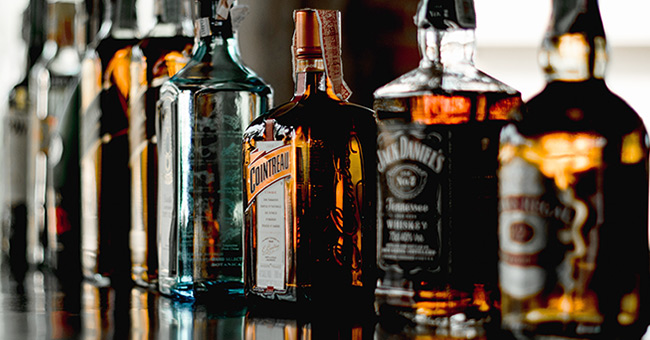Creative directors beware: your spirit labels may get a bit busier in the near future. In November of last year, the U.S. Treasury Department’s Alcohol and Tobacco Tax and Trade Bureau (TTB) announced it would issue proposed rules for nutrient, allergen, and alcohol content labeling, as well as preliminary rules for ingredient labeling on wine, beer, and spirits. The announcement comes at a time when health and wellness movements have fueled consumers’ interests in what they’re drinking, but how would the proposed new rules impact spirit producers?
The decision comes after an alliance of consumer groups sued the TTB for failing to act on a 2003 petition to standardize alcohol labeling like other non-alcoholic food and beverage products. Currently, alcoholic beverages are not required to disclose ingredient, allergen, or nutritional labeling, and the alcohol content labeling rules differ by category. Spirits are only required to disclose the alcohol content and class of spirit.
While the TTB began the process in the years after the original petition, no finalized rules were converted into legislation. Now, the TTB has committed to publishing three rulemakings covering mandatory labeling within the next year, but warned that future events could affect the timeframe.
The petition called for an alcohol facts panel, similar to the nutritional facts panel on other food and beverage packaging. Within the panel, information would include the amount of alcohol and calories per serving, the percent alcohol by volume, the serving size, the number of standard drinks per container, and other information. The consumer groups also petitioned for a listing of ingredients.
“Better labeling requirements for alcoholic beverages will allow consumers to make more informed decisions,” said Thomas Gremillion, director of food policy at the Consumer Federation of America, in a statement. The federation is one of three groups involved in the lawsuit who took up the cause based on “evidence that alcohol is a significant source of empty calories and increases the risk of certain cancers, alcohol use disorders, traffic accidents, and severe injuries” according to the statement.
But some industry stakeholders are concerned that the potential rules could add to consumer confusion. Distilled spirits ingredient labeling is a complex issue and spirits products are distinct from other beverage alcohol products because of the distillation process, the Distilled Spirits Council of the U.S. wrote in a statement emailed to BevNET.
“The distillation process itself transforms the raw materials used to make a spirits product in such a way that many of the ingredients, proteins, peptides or fragments, for example, are not carried over into the distillate,” read the statement. “Labeling for ingredients that went through the distillation process and are no longer present in the final product might introduce consumer confusion, rather than mitigate it.”
However, DISCUS recently announced a voluntary commitment to provide serving facts for spirits products as part of the White House Conference on Hunger, Nutrition and Health. By June 2024, all spirits products distributed in the U.S. by DISCUS director members, such as Bacardi USA and Beam Suntory, will include serving size as well as calories, and grams of carbohydrates, protein, and fat per serving size either on the label directly or via a scannable code.
The organization added that they look forward to working with the Bureau on the labeling issue as it develops.
Changes to labeling could also potentially be costly for start-ups, according to Chicago-based liquor lawyer Sean O’Leary, but not just in the design process. Larger alcohol producers have recently faced class action cases based on ingredient claims on their labels— last year Anheuser-Busch resolved a suit alleging that its Ritas were promoted as cocktails despite the fact that they didn’t contain distilled spirits. O’Leary is concerned that small producers could be opened up to greater liability.
“With more information required on the label, the greater likelihood of suits,” he said. “Imagine if you’re a small spirits producer that has got investors and you put together a couple million dollars to make a product, and then all of a sudden you’re getting sued because someone thinks something could be misleading to someone.”
Some spirit producers welcome the push towards transparency.
“While we’ll wait for the TTB’s rules before weighing in on specifics, we are big fans of bringing more transparency to consumers,” said Brian Treacy, co-founder and president of distillery operations at Maryland’s Sagamore Spirit. “People deserve to know what they are drinking, how it is made and where it comes from, and our brand is committed to this effort.”
For spirit categories that suffer from misconceptions about ingredients or sugar quantity, increased clarity about contents could be helpful— but that doesn’t necessarily equate to enthusiasm for mandatory information encroaching on precious real estate.
“Generally speaking the more control a producer has over the content of the label the better they can message their specific vision to their consumer,” said Frank Klein, founder of soon-to-launch Farfields Rum. “So requiring more [information] limits design capabilities, but for us in the rum category we kind of welcome transparency because there have been past misconceptions about what is, and what isn’t in rum from large and small producers.”
In early stage focus groups, he found that many consumers were confused about sugar content, sugar addition, and additives to rums. Klein is part of a new wave of premium rum entrepreneurs who are challenging the spirit’s reputation by leading with messaging that promotes its lack of additives, use of sustainably sourced ingredients, and increased transparency.
“Rum distilled from cane products and no additives or extra added sugars are very clean expressive spirits and that is what we intend to showcase and message to our consumer, label modifications or not,” he said.
